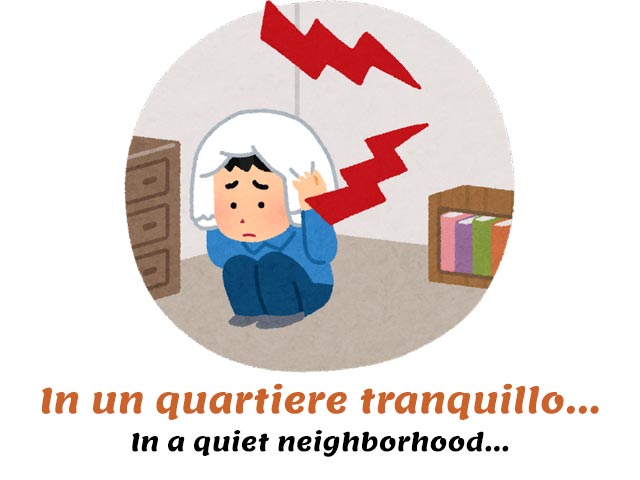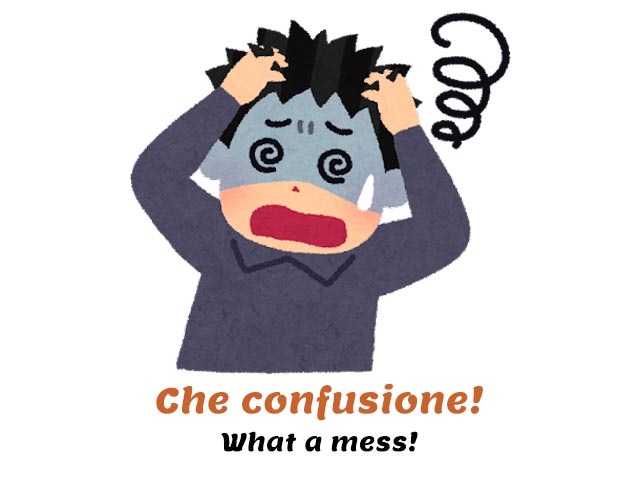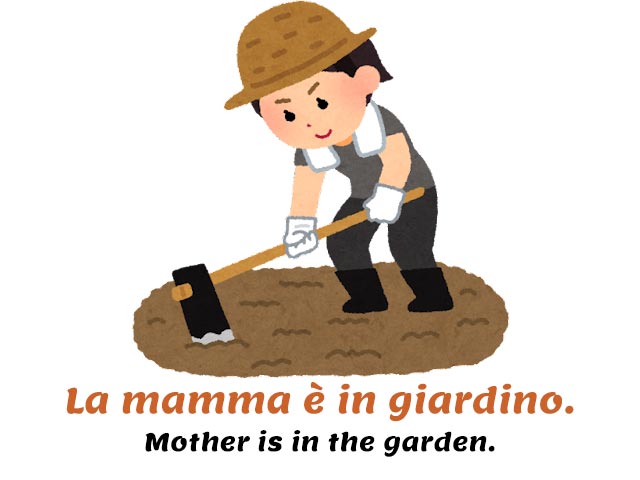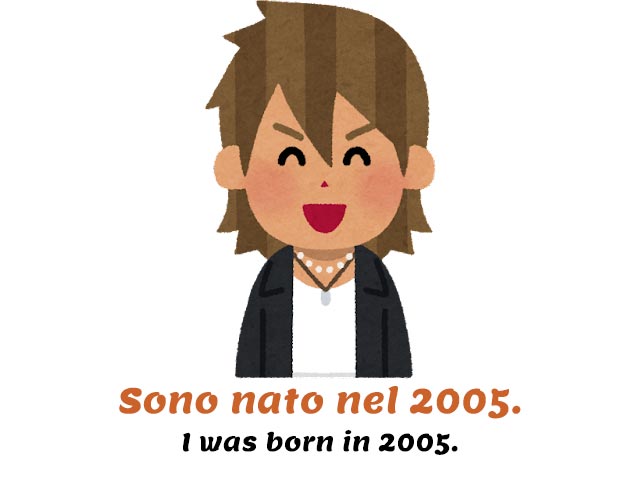Italian grammar
How to use the preposition in
Let me start with a general explanation of how prepositions work in this language.
Every preposition in Italian can be either semplice, simple, or articolata, “with an article”.
Italian simple prepositions are what you probably already know as prepositions: DI, A, DA, IN, CON, SU, PER, TRA, FRA.
Mia zia abita in Germania.
My aunt lives in Germany.
If necessary, any of these prepositions can be followed by an indefinite article, which is placed in front of the preposition as a separate word.
Vivo in un quartiere tranquillo.
I live in a quiet neighborhood.

However, when used in a sentence, DI, A, DA, IN and SU cannot be followed directly by a definite article. The definite article merges with these prepositions to form what is called a preposizione articolata, “preposition with an article”.
I piatti sono sulla mensola.
The dishes are on the shelf.
Ci sono tre metri dal divano al televisore.
There are three meters from the sofa to the TV set.
You cannot say:
I piatti sono su la mensola.
Ci sono tre metri da il divano a il televisore.
Remember: if you need to use a definite article before DI, A, DA, IN and SU, you must merge the article with the preposition itself.
PER, TRA and FRA are never merged with a definite article, so they exist only in their simple form.
Chiamami fra cinque minuti, ora sono occupato.
Call me in five minutes, I’m busy now.
Questo regalo è per te.
This gift is for you.

CON can only merge with the masculine singular article il to form the preposition COL. No other variants are allowed.
That said, how many variants are there of the preposition in in Italian? Have a look at the table below.
Preposition in in Italian
| IN | nel | nello | nella | nei | negli | nelle |
| + | il | lo | la | i | gli | le |
Pay attention to how the preposition changes: in has a ne- root!
Because there is a preposizione articolata for each definite article, there are a total of 7 variations of the preposition in in Italian.
For example, you can say…
Il coniglio corre nella sua tana.
The rabbit runs into its burrow.
Vivo negli Stati Uniti.
I live in the United States.

Don’t worry. It all sounds so tiresome, but I assure you it’s not!
Now that we’ve seen how to use the preposition in in Italian, let’s see when you can use it.
When to use the preposition in in Italian
As you probably already know, the Italian preposition in is roughly equivalent to the English preposition in. However, there are many cases where this rule does not apply.
At first glance, it can be difficult to understand when and how to use this preposition. However, as you will see, there are a number of rules that tell you exactly when to use in in a sentence. You must use in and its variants with an article…
- to specify a place (NOT a city) you’re in or going to, with a few exceptions
- to specify what stuff is made of
- with means of transport
- to translate “in” referring to time
- to specify when something happened precisely

Che confusione! That can be… quite overwhelming, so let me make a few real-life examples for each of the given situations.
Preposition in in Italian for every situation
To specify a place (NOT a city) you’re in or going to, with a few exceptions…
Mia figlia è andata a studiare in America.
My daughter went to study in America.
Le posate sono nel secondo cassetto della credenza.
The cutlery is in the second drawer of the cupboard.
La mamma è in giardino e gioca con il cane.
Mother is in the garden playing with the dog.

To specify what stuff is made of…
Questa maglietta è in cotone.
This T-shirt is made of cotton.
Ho fatto costruire una nuova porta in legno per l’ingresso.
I had a new wooden door built for the entrance.
With means of transport (by + means of transport)…
Vado sempre in ufficio in macchina.
I always drive to the office.
Viaggiare in autobus è molto comodo.
Traveling by bus is very convenient.
Hai mai viaggiato in aereo?
Have you ever traveled by plane?

To translate “in” referring to time…
Il caffè sarà pronto in cinque minuti.
Coffee will be ready in five minutes.
Durante la riunione, ricapitoleremo quanto abbiamo fatto in due mesi di lavoro.
During the meeting, we will recap what we have done in two months of work.
Non abbiamo avuto una nevicata così intensa negli ultimi venti anni.
We have not had such an intense snowfall in the last 20 years.
To specify when something happened precisely…
Che cosa facevano i giovani negli anni Cinquanta?
What did young people do in the 1950s?
L’uomo è andato per la prima volta sulla Luna nel 1969.
Man first went to the moon in 1969.
Sono nato nel 2005.
I was born in 2005.

These are the main rules you need to follow to use the preposition in correctly in Italian. And if you’re still not sure if you can use it in a sentence, remember that the other Italian prepositions have their own rules. You can go by exclusion, andare per esclusione!
More free Italian resources
You might want to keep learning Italian online with these free Italian resources:
❤️ If you liked this guide on the preposition in in Italian, share it with your friends!


